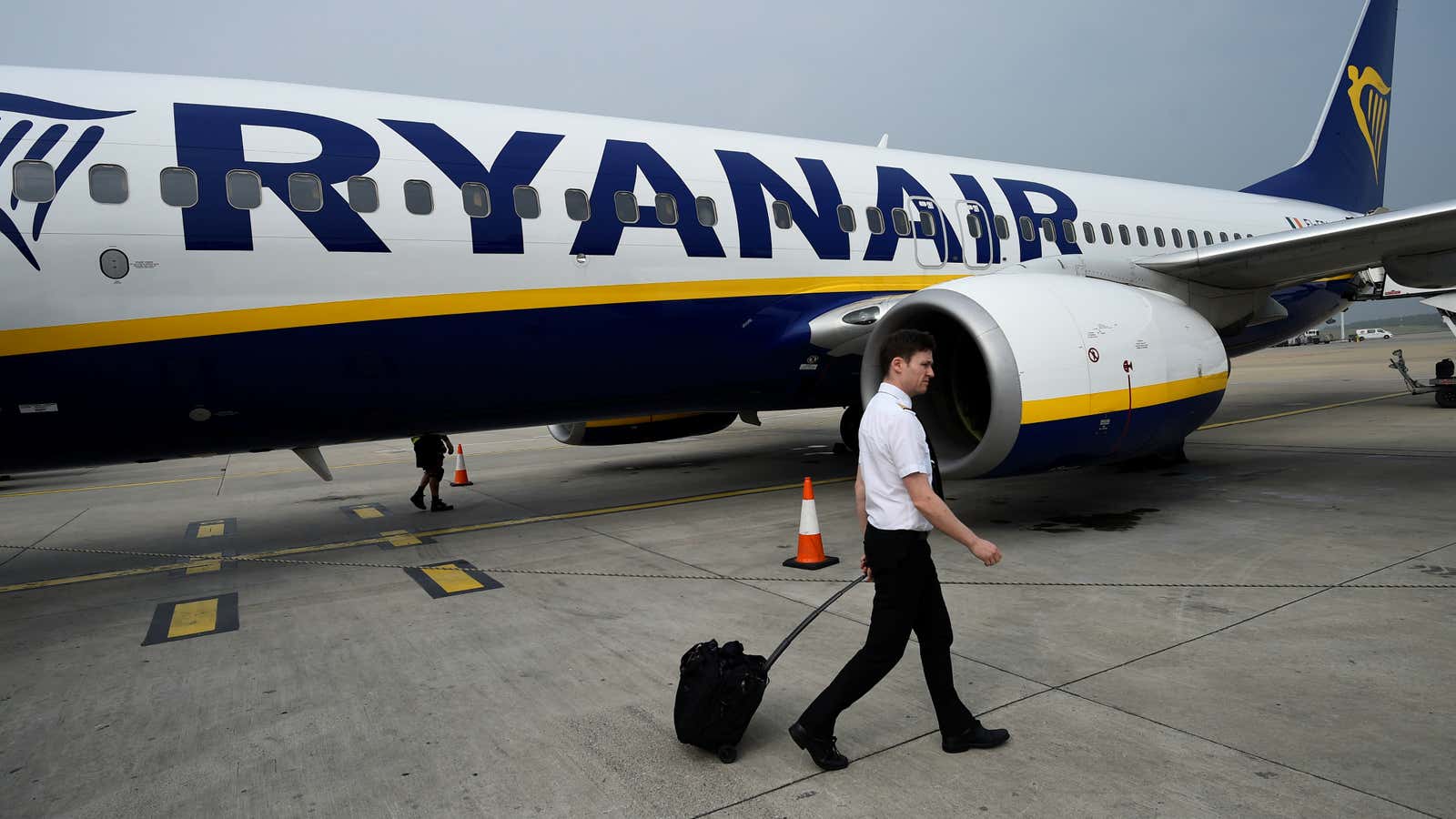If you want to inspire fear and loathing in budget travelers in Europe, mention the worlds “Ryanair baggage policy.”
The low-cost airline, already known for its draconian enforcement of carry-on-baggage rules, has a new policy going into effect on Monday (Jan 15)—one that will infuriate many travelers who pride themselves on skipping the baggage carousel. Essentially, passengers with large carry-ons will be required to gate-check them—or pay for the privilege of taking them on board.
The company says that the policy is designed to prevent flight delays—which cost the airline money—caused by too many carry-on-only travelers trying to overload the overhead compartments. As any frequent Ryanair flier will tell you, this is more or less a formalization of a policy that was happening by default. With so many passengers avoiding the checked bag fee and opting for carry-on-only, Ryanair’s overhead bins rarely have enough space for all the passengers’ luggage. Hence, ticket-holders would frequently queue up at the gate long before boarding commenced to avoid being the unlucky ones crowded out, who were asked to put their carry-on bags in the hold.
So, for passengers who don’t mind the carousel wait after landing, the policy is a boon. It will make for less cramped cabins and more streamlined boarding. And other airlines will undoubtedly be watching closely, to see whether Ryanair has found the solution to an industry-wide problem: More and more airlines—both legacy and budget carriers—are charging for checked baggage, and selling tickets that are carry-on-only. Ryanair’s new policy is the most decisive strike yet against the baggage bloat that is the bane of flight attendants’, pilots, and other passengers’ experience.
Ryanair’s announcement was first made back in September, when the airline also reduced the cost of a checked-in bag and increased the weight limit, to encourage more passengers to check their bags. Implementation of the new carry-on policy was delayed until the new year, to allow customers more time to adapt to the change.
So what do budget travelers need to know? Travelers are still permitted to have two carry-on bags (one small personal item of 35cm x 20cm x 20cm, and one larger rolling carry-on of 55cm x 40cm x 20cm and a maximum weight of 10kgs, or 22 lbs) free of charge. However, the larger item will now be automatically put in the luggage hold at the gate, meaning that passengers will have to retrieve their larger carry-on at the baggage claim after the flight. This rule will apply even if the flight is not full, a rep for Ryanair confirmed.
Those who travel only with a larger carry-on will still have to put it in the hold, so make sure you bring a small bag for your valuables if you usually travel with only one bag. And if your carry-on exceeds the weight or dimensions described above, you’ll be charged a fee (£50/€50 depending what currency you pay in) to put it in the hold.
Of course, in true Ryanair style, the airline is now promoting “No waiting on hand luggage at the carousel” as a perk of its priority boarding service—charging for what used to be a baseline expectation of carry-on travelers. The £5/€5 priority boarding charge at the time of ticket purchase (or £6/€6 if added later, up to 45 minutes before the flight) allows ticket holders to take both carry-ons onboard, in addition to being called in the first boarding group. Passengers paying more for Plus, Flexi Plus & Family Plus tickets will also be entitled to two carry-on bags.
Of course, all airlines have and enforce baggage policies. Low cost carriers in the US such as JetBlue and Southwest also sometimes will check in a carry-on at the gate if it doesn’t fit requirements. But Ryanair’s slim profit margins—as well as frequently-full planes, with a load factor of 94%—means they have to be strict in enforcement of theirs.
In the war to provide ever-cheaper flights to ever-more places, it won’t be all that surprising if other airlines follow suit.
